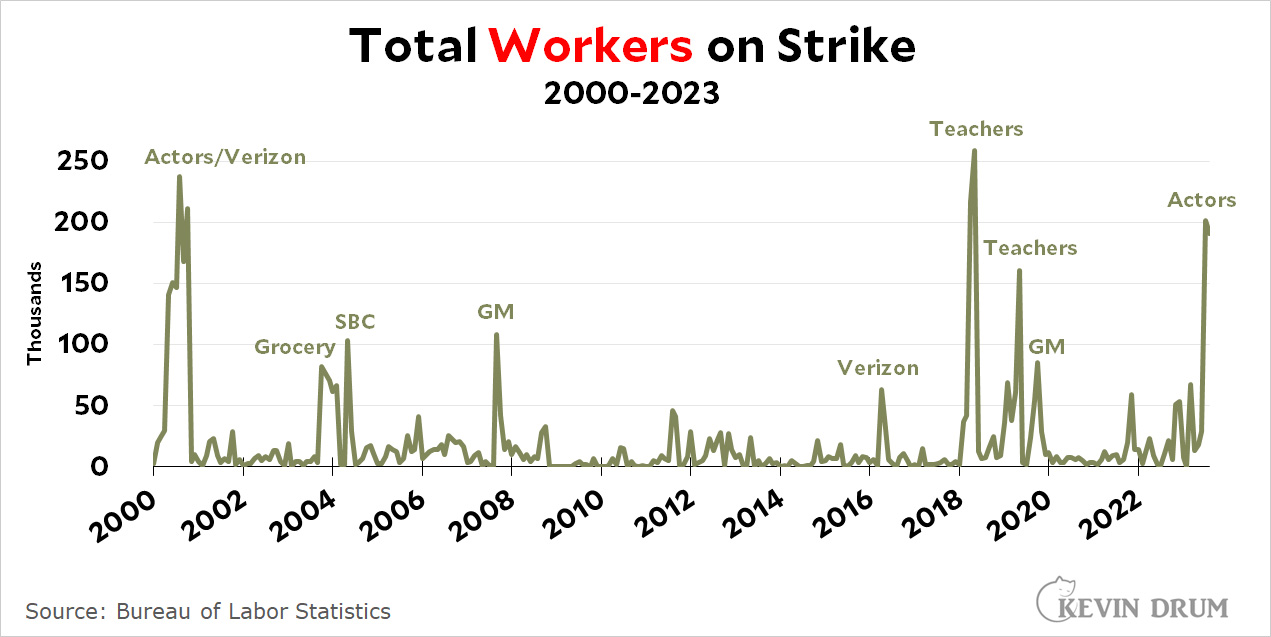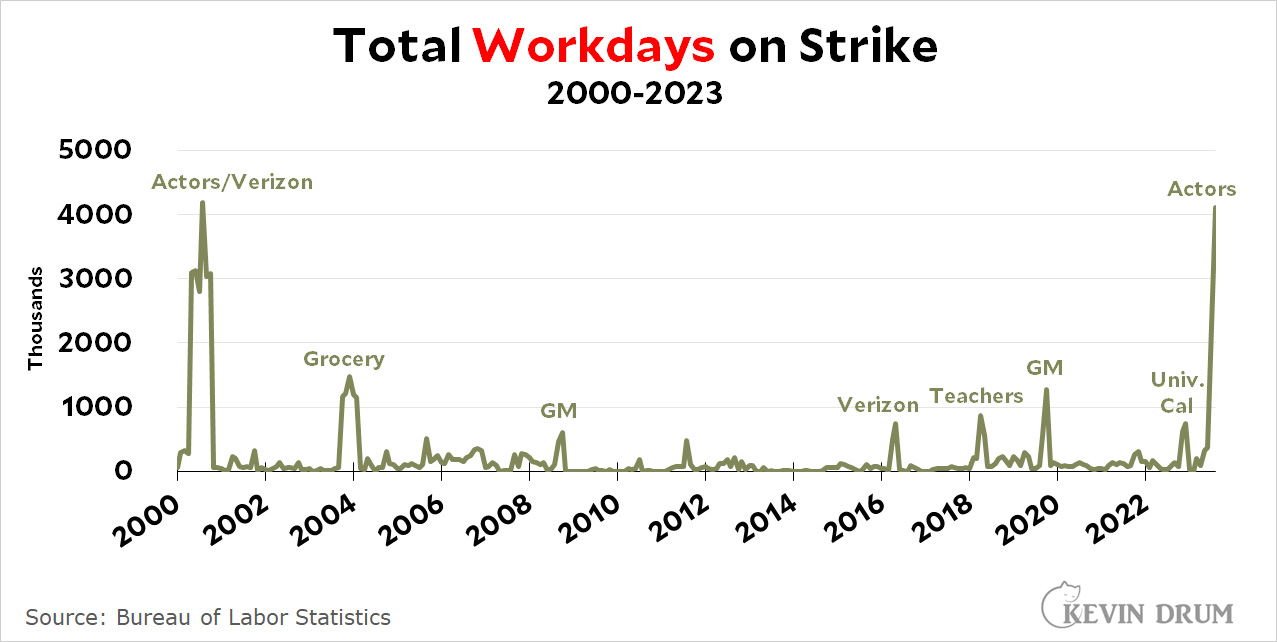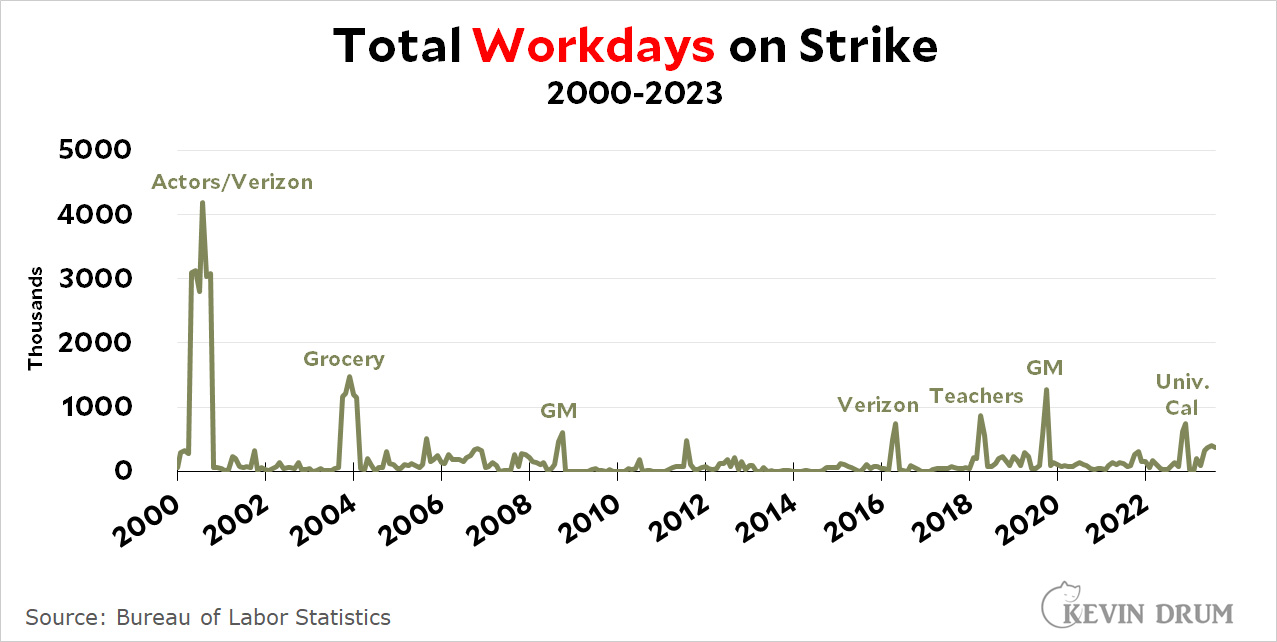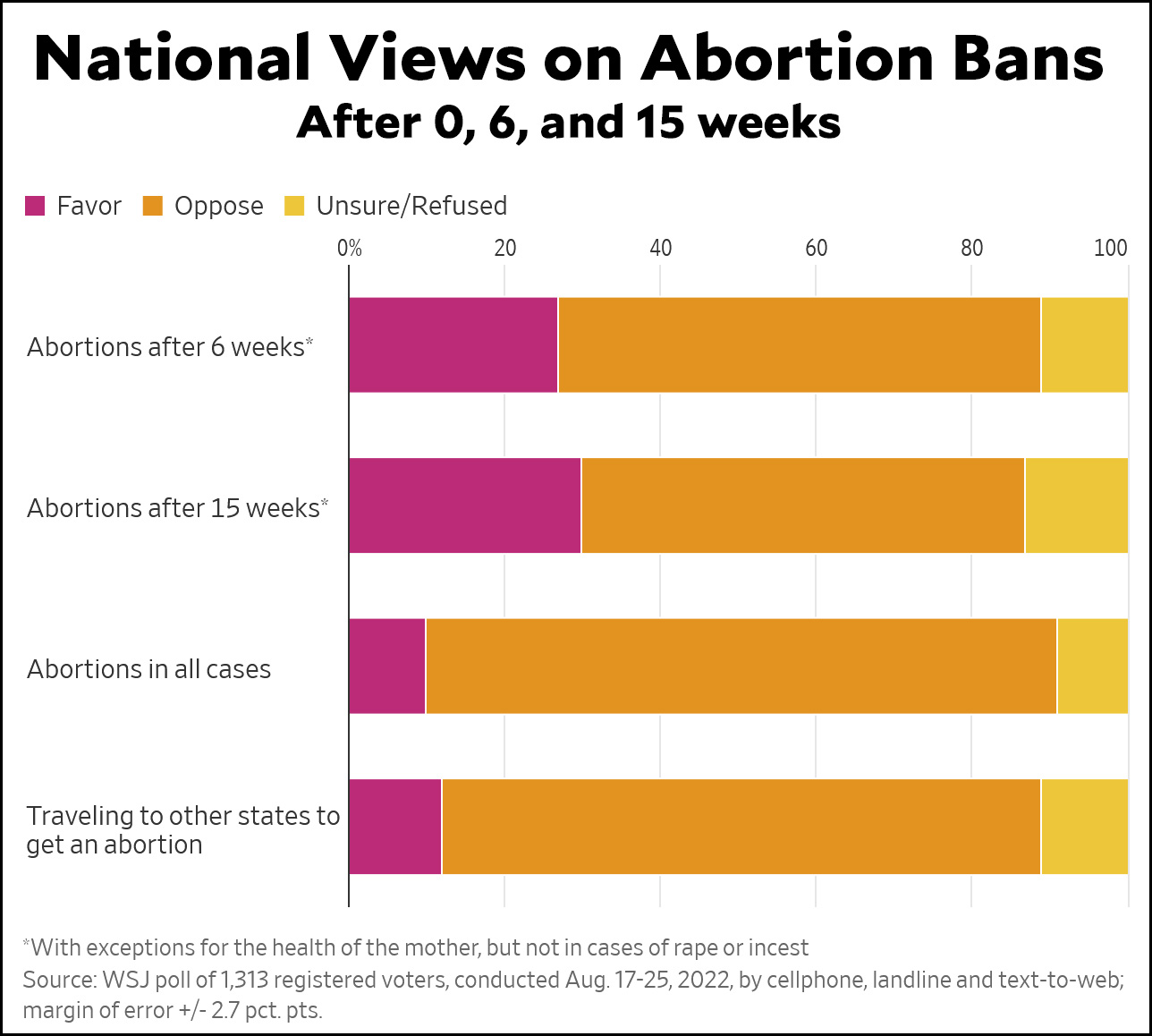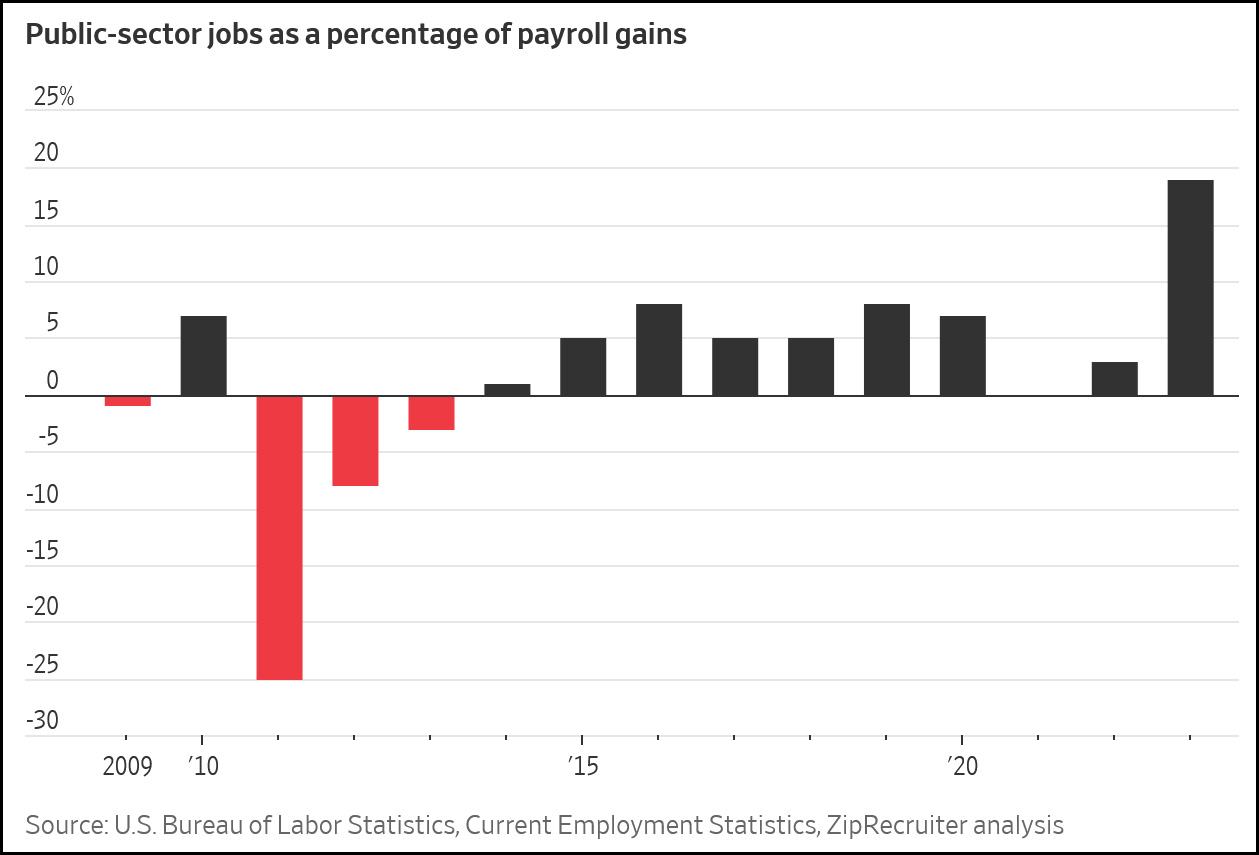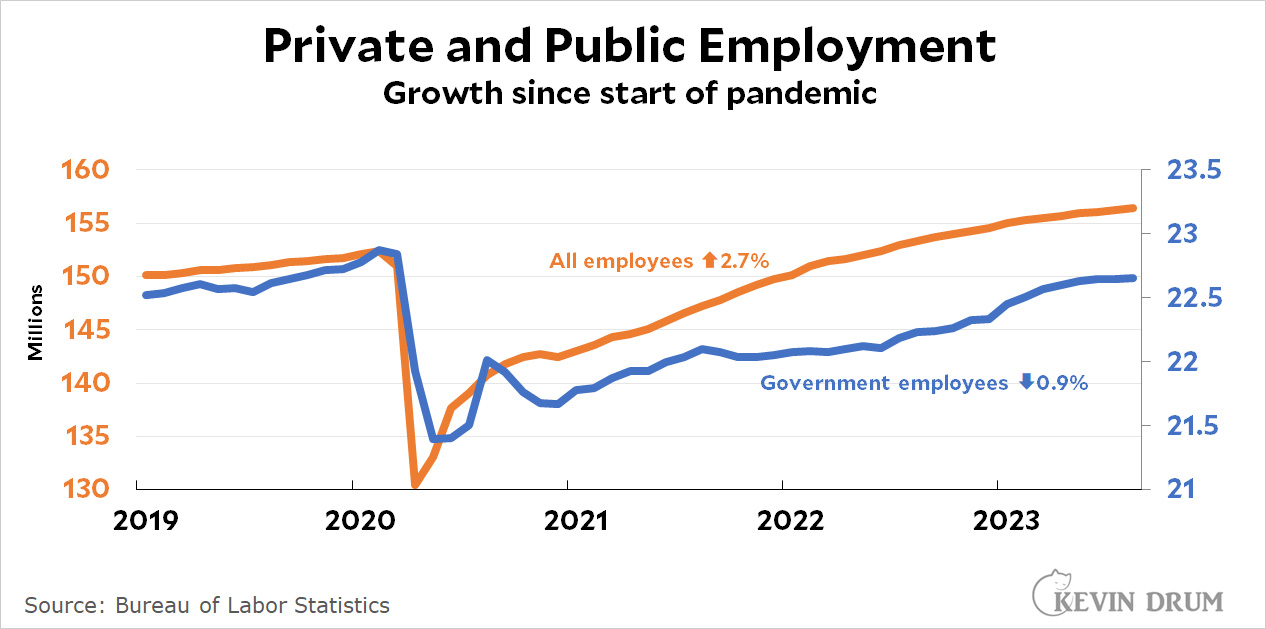In FY22, the budget authority for federal discretionary spending was $1.788 trillion. Actual discretionary spending came in at $1.664 trillion. But the House Freedom Caucus has long been stuck on a figure of $1.471 trillion as "real" FY22 spending, and they want the budget for next year (FY24) to match that.
This makes no sense since it doesn't even account for inflation, but put that aside. I've been wondering forever where this number comes from. It simply doesn't match anything that I've ever been able to dig up. Today, though, I might finally have figured it out thanks to the Heritage Foundation. Apparently it's the pre-COVID trendline extended out to 2024:
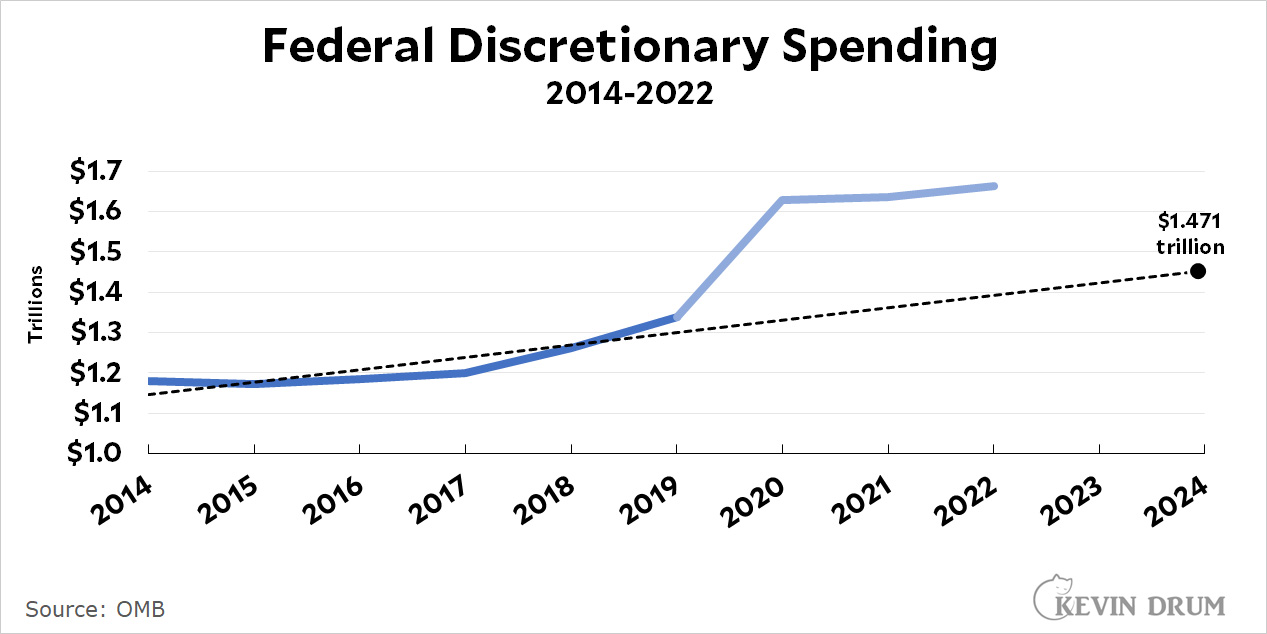 The Heritage number is about 1% higher than my trendline, probably due to slightly different assumptions, but never mind that. It's close enough to suggest that Heritage has this right. The Freedom Caucus number is just a trendline extended from one arbitrary point to another.
The Heritage number is about 1% higher than my trendline, probably due to slightly different assumptions, but never mind that. It's close enough to suggest that Heritage has this right. The Freedom Caucus number is just a trendline extended from one arbitrary point to another.
Here's the same chart but adjusted for inflation:
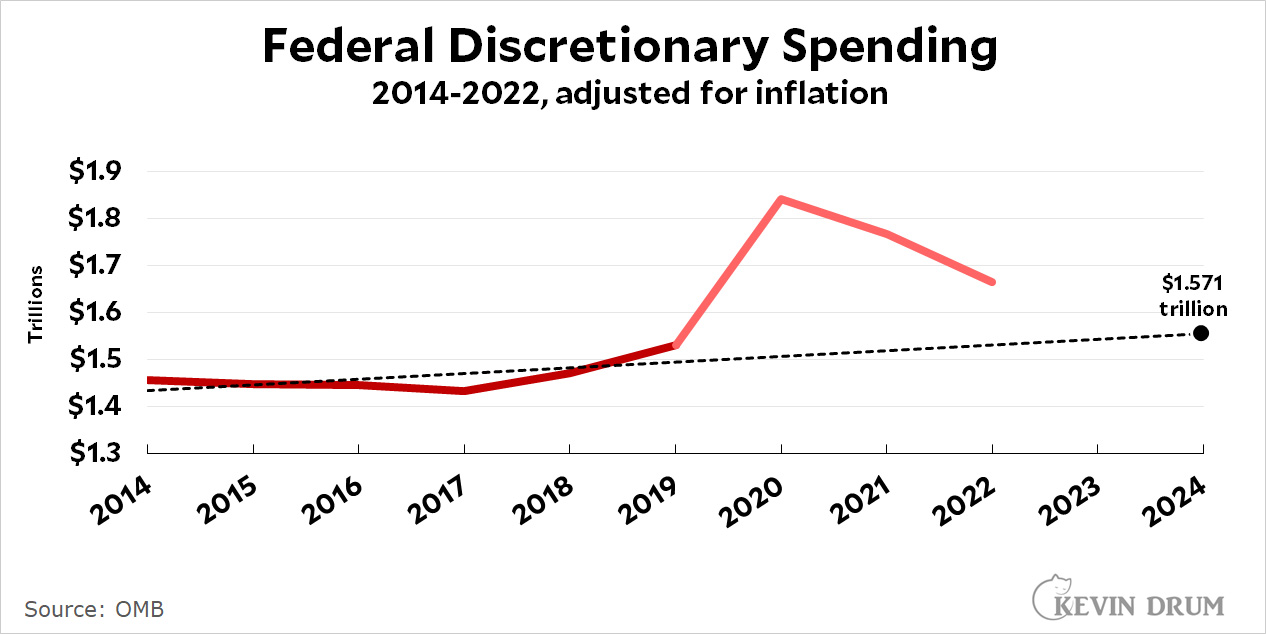 This produces almost precisely the topline number in the bipartisan Senate spending bill, which is based on the number agreed to during the debt ceiling negotiations. And while there's no special reason to use this trendline at all, if you're going to do it you at least need to adjust for inflation.
This produces almost precisely the topline number in the bipartisan Senate spending bill, which is based on the number agreed to during the debt ceiling negotiations. And while there's no special reason to use this trendline at all, if you're going to do it you at least need to adjust for inflation.
Anyway, I just wanted to share this since it's been bugging me for a while. The Freedom Caucus number is neither the "FY22 number" nor the "real FY22 number." In fact, it has nothing at all to do with FY22. It's apparently just a made-up number from drawing a trendline.
If anyone happens to have a different story about where the Freedom Caucus number came from, let me know in comments.






